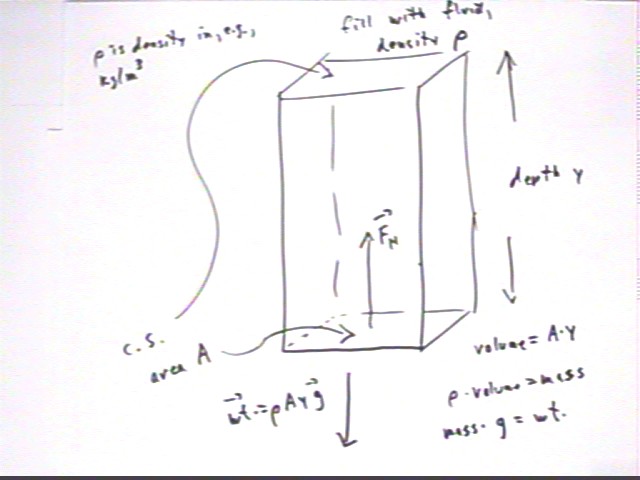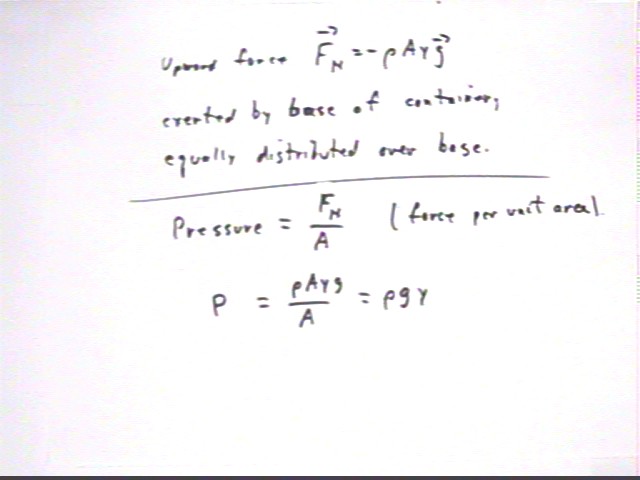Pressure at depth y using container of uniform cross-section
The situation depicted below will demonstrate how the pressure
in a stationary fluid depends only on the density of the fluid, the depth and
the gravitational acceleration.
- We consider a container with uniform cross-sectional area
A, filled to depth y with a fluid of density rho.
- The volume of the fluid is A * y, so that its mass is
density * volume = rho * A * y and the weight of the fluid is therefore
weight = - rho A y g (implicitly using the upward direction as positive).
- Since the fluid is stationary its acceleration is zero, so
the net force on the fluid is zero. There must therefore be (an)other
force(s), equal and opposite to the weight.
- This force is the normal force exerted by the base of the
container on the fluid.

The force Fnormal is therefore
This force is equally distributed over the base of the
container, so it makes sense to speak of the force per unit area.
This force per unit area is the pressure. A simple
calculation shows us that at depth y the pressure is
- P = Fnormal / A = rho g A y / A = rho g y.



